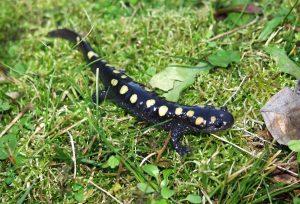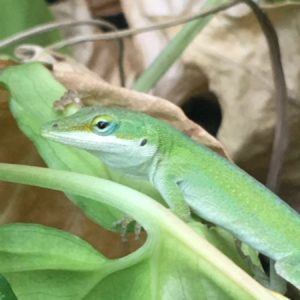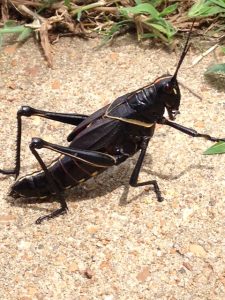 Spotted Salamander (Ambystoma maculatum)
Spotted Salamander (Ambystoma maculatum)
The Spotted Salamander is a member of a group of salamanders, called mole salamanders, that spend most of its time underground. They are black with two rows of yellow spots running the length of their bodies. The underside of the spotted salamander is pinkish gray. This 15–25 cm (5.9–9.8 in) long salamander ventures out of the only to feed and mate so typically they are found under rotten logs or in breeding ponds. The spotted salamander are nocturnal feeding on diet crickets, worms, insects, spiders, slugs, centipedes, and millipedes which they hunt at night. Spotted salamander have two large poison glands at the back of their heads which excrete a noxious milky substance when threatened or disturbed. Like some lizards they may loose their tails (autotomy) to escape a predator which is regenerated.

